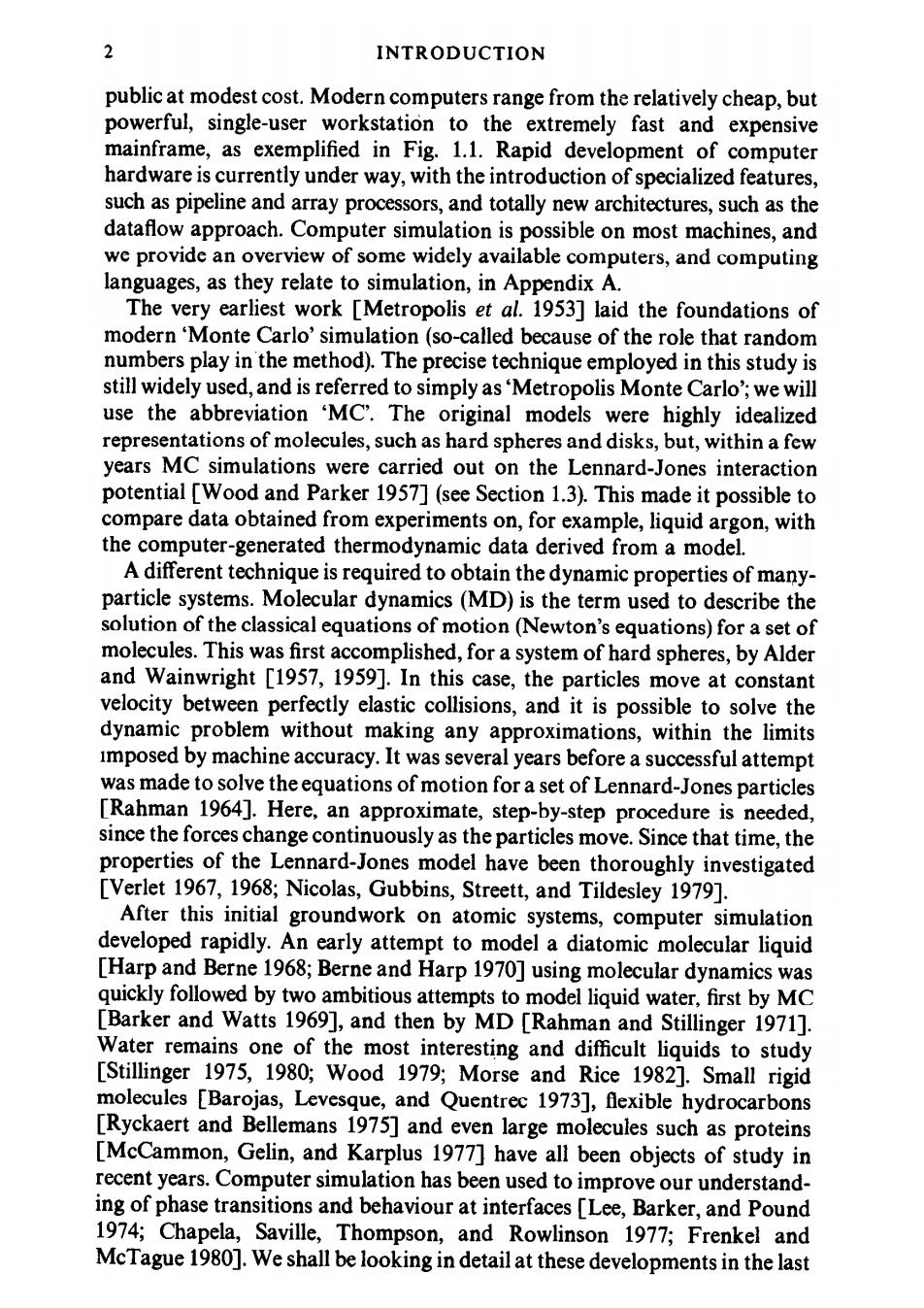正在加载图片...

2 INTRODUCTION public at modest cost.Modern computers range from the relatively cheap,but powerful,single-user workstation to the extremely fast and expensive mainframe,as exemplified in Fig.1.1.Rapid development of computer hardware is currently under way,with the introduction of specialized features, such as pipeline and array processors,and totally new architectures,such as the dataflow approach.Computer simulation is possible on most machines,and we provide an overview of some widely available computers,and computing languages,as they relate to simulation,in Appendix A. The very earliest work [Metropolis et al.1953]laid the foundations of modern 'Monte Carlo'simulation (so-called because of the role that random numbers play in the method).The precise technique employed in this study is still widely used,and is referred to simply as'Metropolis Monte Carlo';we will use the abbreviation 'MC.The original models were highly idealized representations of molecules,such as hard spheres and disks,but,within a few years MC simulations were carried out on the Lennard-Jones interaction potential [Wood and Parker 1957](see Section 1.3).This made it possible to compare data obtained from experiments on,for example,liquid argon,with the computer-generated thermodynamic data derived from a model. A different technique is required to obtain the dynamic properties of many- particle systems.Molecular dynamics(MD)is the term used to describe the solution of the classical equations of motion (Newton's equations)for a set of molecules.This was first accomplished,for a system of hard spheres,by Alder and Wainwright [1957,1959].In this case,the particles move at constant velocity between perfectly elastic collisions,and it is possible to solve the dynamic problem without making any approximations,within the limits Imposed by machine accuracy.It was several years before a successful attempt was made to solve the equations of motion for a set of Lennard-Jones particles [Rahman 1964].Here,an approximate,step-by-step procedure is needed, since the forces change continuously as the particles move.Since that time,the properties of the Lennard-Jones model have been thoroughly investigated [Verlet 1967,1968;Nicolas,Gubbins,Streett,and Tildesley 1979]. After this initial groundwork on atomic systems,computer simulation developed rapidly.An early attempt to model a diatomic molecular liquid [Harp and Berne 1968;Berne and Harp 1970]using molecular dynamics was quickly followed by two ambitious attempts to model liquid water,first by MC [Barker and Watts 1969],and then by MD [Rahman and Stillinger 1971]. Water remains one of the most interesting and difficult liquids to study [Stillinger 1975,1980;Wood 1979;Morse and Rice 1982].Small rigid molecules [Barojas,Levesque,and Quentrec 1973],flexible hydrocarbons [Ryckaert and Bellemans 1975]and even large molecules such as proteins [McCammon,Gelin,and Karplus 1977]have all been objects of study in recent years.Computer simulation has been used to improve our understand- ing of phase transitions and behaviour at interfaces [Lee,Barker,and Pound 1974;Chapela,Saville,Thompson,and Rowlinson 1977;Frenkel and McTague 1980].We shall be looking in detail at these developments in the last